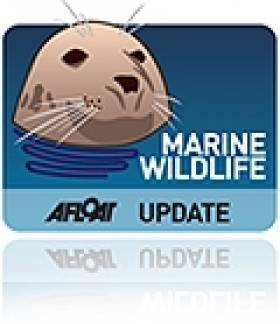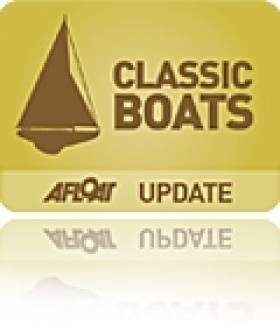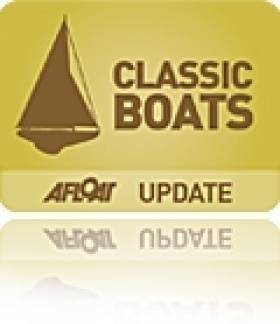Displaying items by tag: Kilcoole
Record Year for Rare Seabird on Wicklow Beach
#terns – 2014 has been the best breeding year on record for one of Ireland's rarest seabirds, the little tern.
The County Wicklow birds are protected and enjoy 24–hour monitoring because for many years they were a species on the brink. There are now 111 breeding pairs and 213 chicks, a record since monitoring began 30 years ago at Kilcoole beach, one of the few remaining little tern colonies in the country.
The story for the national broadcaster by RTE's Philip Bromwell was – amazingly – filmed entirely on an iPhone 5S.
#asgard – The successful shipment of 1500 German-made Mauser rifles in 1914 by Erskine Childers and his associates in support of the Irish Volunteers and their defence of Home Rule was commemorated in a re-enactment yesterday at Howth attended by President Higgins. There were further ceremonies at Kilcoole in County Wicklow, where 600 of the rifles were later landed.
The 1905 Asgard, designed and built by Colin Archer in Norway to be a wedding present for Erskine Childers and his American bride Molly Osgood, is now conserved as a permanent exhibition at the National Museum in Collins Barracks. Yesterday, a modern ketch provided a useful stand-in for Asgard's most famous role in which – despite arriving in Howth on July 26th 1914 in a near-gale from the northwest – 900 rifles were quickly unloaded by the Volunteers and marched into Dublin.
It was only in the city centre at Bachelolors Walk that serious trouble erupted a hundred years ago, when British soldiers fired on a hostile crowd as the guns were being spirited away into hiding. The shots resulted in four civilian deaths, and their loss was mourned and honoured in yesterday's ceremonies.
The remarkable contribution by Erskine Childers and his family to Irish life for more than a hundred years was marked by the presence in Howth of Nessa Childers MEP and her brother Rory, the latter taking part personally in the re-enactment. President Higgins spoke movingly of the bravery of their grandparents in putting their lives at risk in taking action in support of a cause in which they passionately believed, their action playing a pivotal role in subsequent events.
The complexity of the gun running project became clear as the events surrounding it were outlined in Kilcoole. Originally, the 1500 guns were collected by Asgard and noted voyager Conor O'Brien's yacht Kelpie from a German tug with which they rendezvoused off the Belgian coast. Then while Asgard's entire cargo was sailed to Howth, most of the Kelpie's cargo was transferred off the Welsh coast to the 60ft yacht Chotah owned by the surgeon Sir Thomas Myles, who in his time was both the leader of the Irish Protestant Nationalist Association, and President of the Royal College of Surgeons.
{youtube}jVffT6thxxA{/youtube}
Chotah was brought into the project as it was felt her auxiliary engine would facilitate the landing straight onto the beach across St George's Channel channel at Kilcoole, where she was assisted by the McLaughlin family's fishing boat Nugget. In all, as an exercise in both gesture politics and guerilla activity, the mission was a remarkable success. But it paled into significance within days, as the outbreak of World War I swept events great and small aside. Many of those personally involved in the gun running were soon to see active service with the British forces, and Gordon Shephard, sailing shipmate and close friend of Erskine and Molly Childers for several years, and a leading figure in the Asgard episode in Howth, was to die on service as the youngest Brigadier in the British Army.
With Asgard now preserved as a national monument and never to sail again, several modern Asgard volunteers felt that an appropriately peaceful contribution would be to build a re-construction of Asgard's original little clinker-built sailing dinghy, as there are several photos of Erskine and Molly Childers in happier times with this little boat, which has long since disappeared. Thanks to basic drawings by Colin Archer, the boat could be exactly replicated, and lead organiser Pat Murphy and his team commissioned a reconstruction from boatbuilder Larry Archer (no relation), resulting in a new traditional boat which proved to be one of the stars of the show in Howth.

Happier days – Molly and Erskine Childers with the original Asgard dinghy
Kilcoole Gun Running on Yacht 'Chotah' to be Re–Enacted
#gunrunning – This weekend marks one hundred years since the gun running into Kilcoole Beach in County Wicklow by the yacht Chotah, as equally an important landing for the 1916 Rising but much less known than the famous Howth gun running carried out by Erskine Childers on Asgard.
It's part of a fascinating but little know maritime dimension to the Rising where yachts and trawlers were deployed to carry the precious weapons to Ireland. It was Childers' yacht Asgard and Conor O'Brien's Kelpie which carried the vital cargo, having been loaded from a tug in the North Sea but locally there were fishing vessels such as the Nugget from Howth that also ferried the guns from yachts to shore.
The Kilcoole Gun running Centenary Heritage Weekend is a two day celebration to mark a historic occasion: on 2 August 1914, 600 guns landed at Kilcoole beach and were brought to the village for the 1916 Rising. The programme is attached for download below.
In 1914, Erskine and Molly Childers transported guns on their yacht, the Asgard, from Germany to Ireland.
These had been bought to arm the Irish Volunteers in response to the Larne gunrunning that armed the Ulster Volunteers. However, of the 1,500 Mauser rifles, while 900 were landed at Howth the remaining 600 were to be landed at another suitable location.
On the morning of the 2nd of August 1914 the second part of this shipment was landed on Kilcoole beach, transported there on the yacht, the 'Chotah'.
What happened at Kilcoole will be celebrated this weekend and will include demonstrations and a re-enactment of trades of the time.
Come along and see the historical re-enactment of the gun running which will include a parade led by an Army Colour Party down to the beach, vintage trucks and cars of the time, and a full display by a re-enactment company to include a yacht ready to unload its cargo!
Don't miss the traditional Irish cookery demonstrations, lace & quilt expos and craft demonstrations such as weaving, stone cutting, wool spinning, wood turning/chair making and basket making.
In addition, there will be displays of historical importance pertaining to Kilcoole such as photography of the period, genealogy, traditional games, and music and dance. A Latin mass is also planned.
The community will be encouraged to dress for the period as Kilcoole will go back in time!
For more on this story click for a Wicklow People article


























































